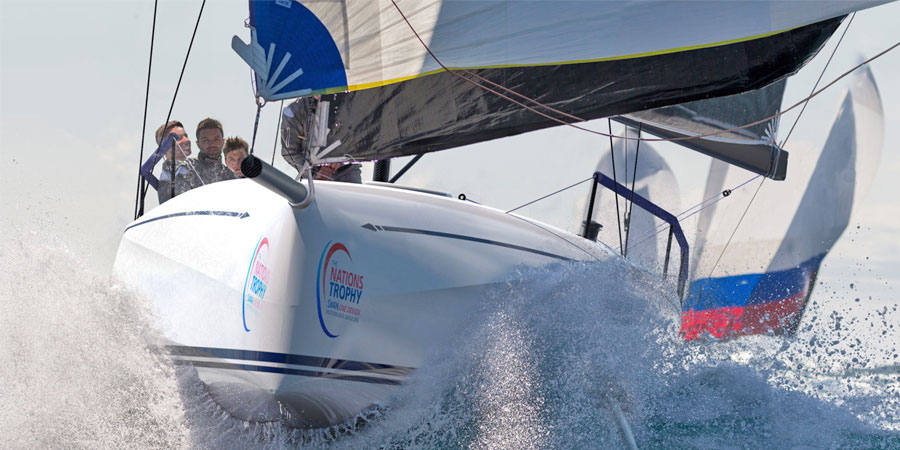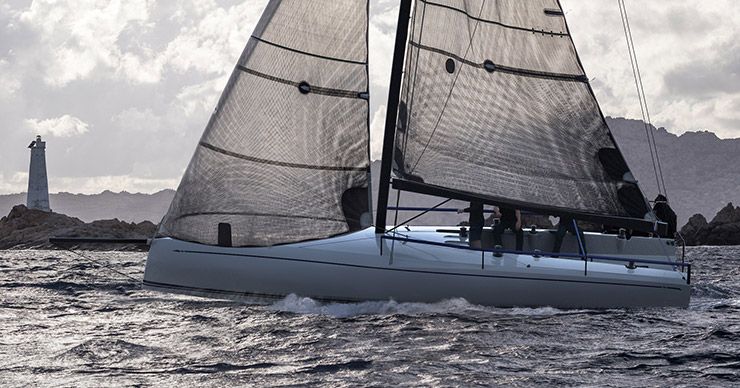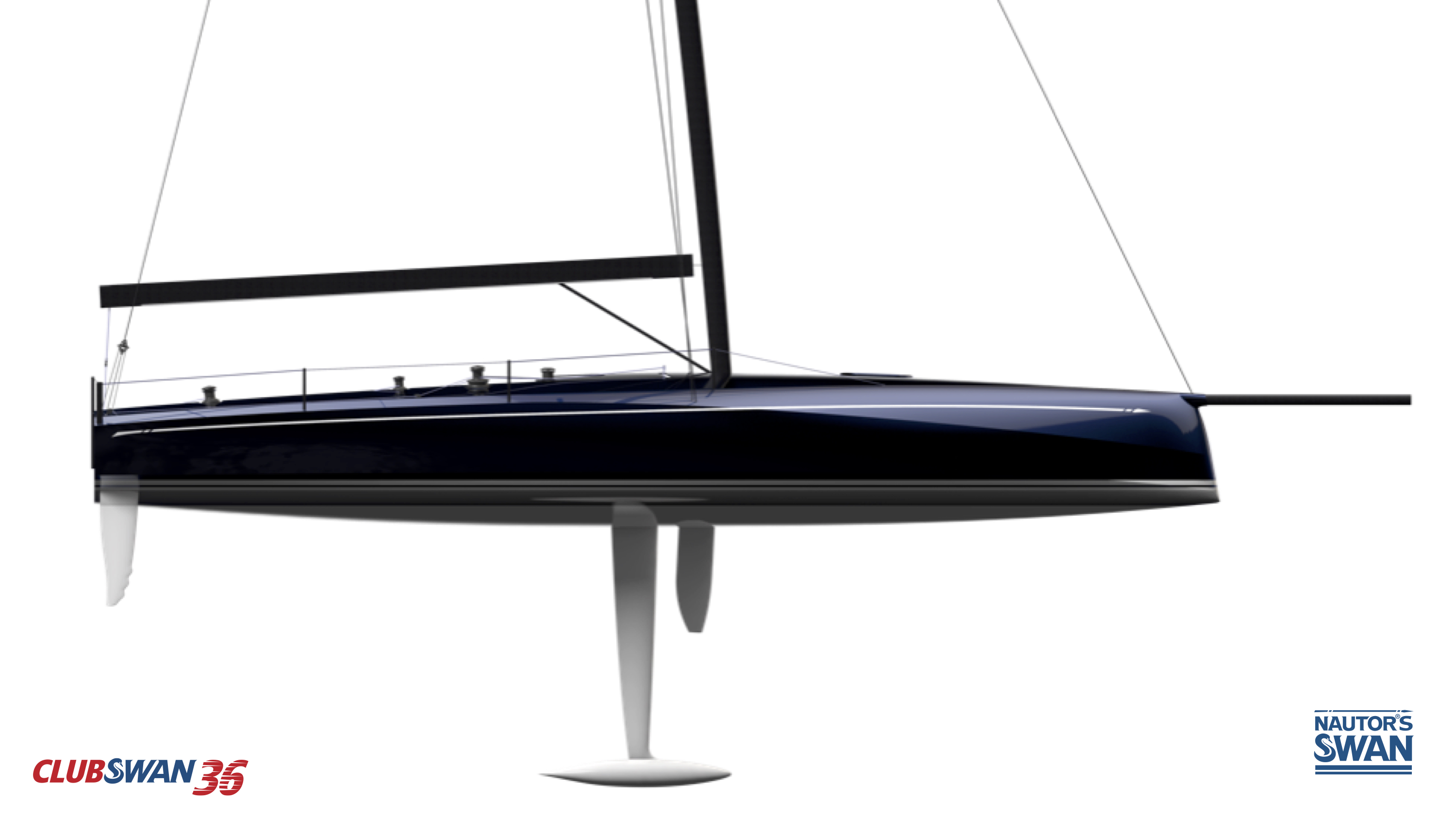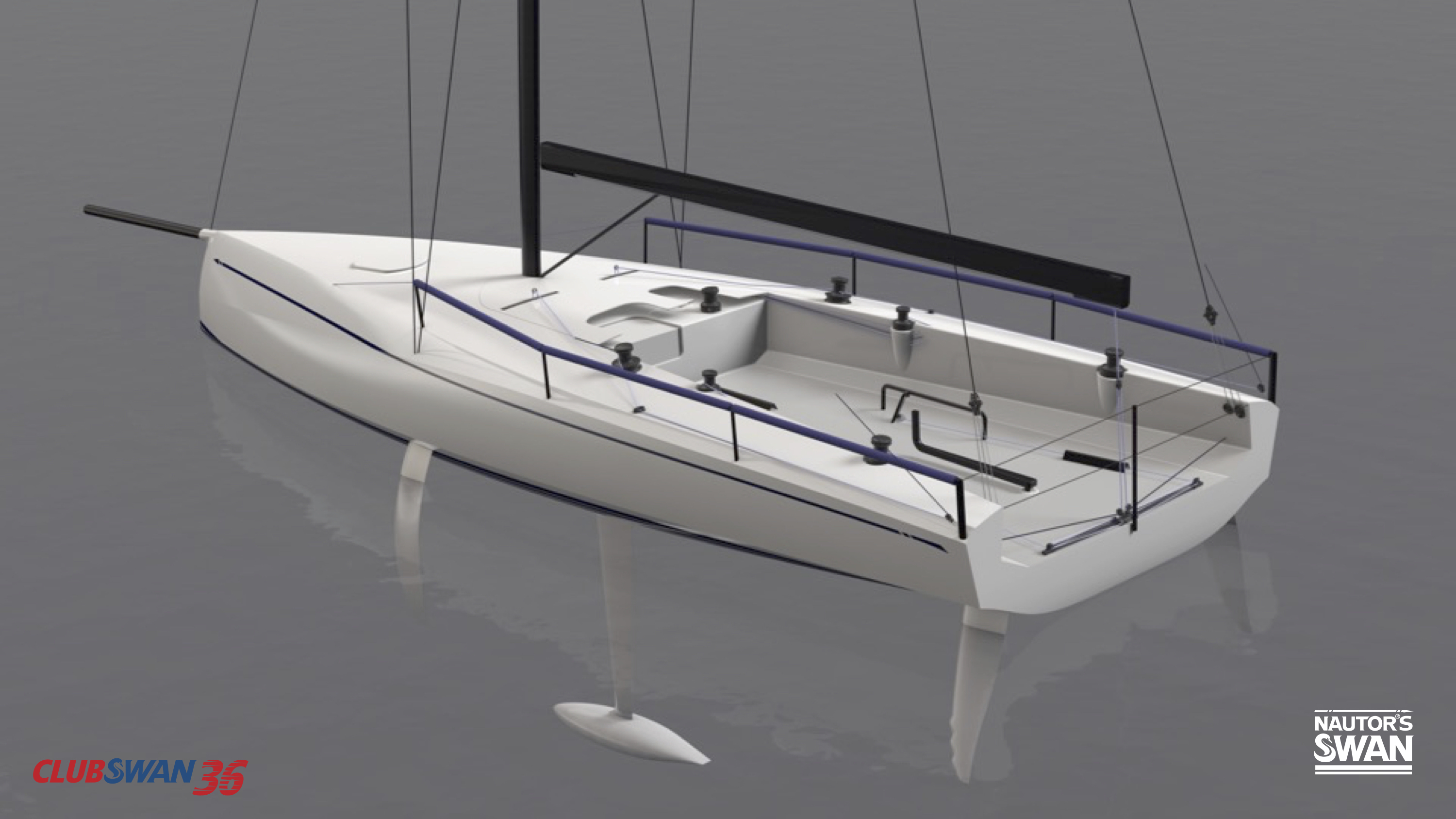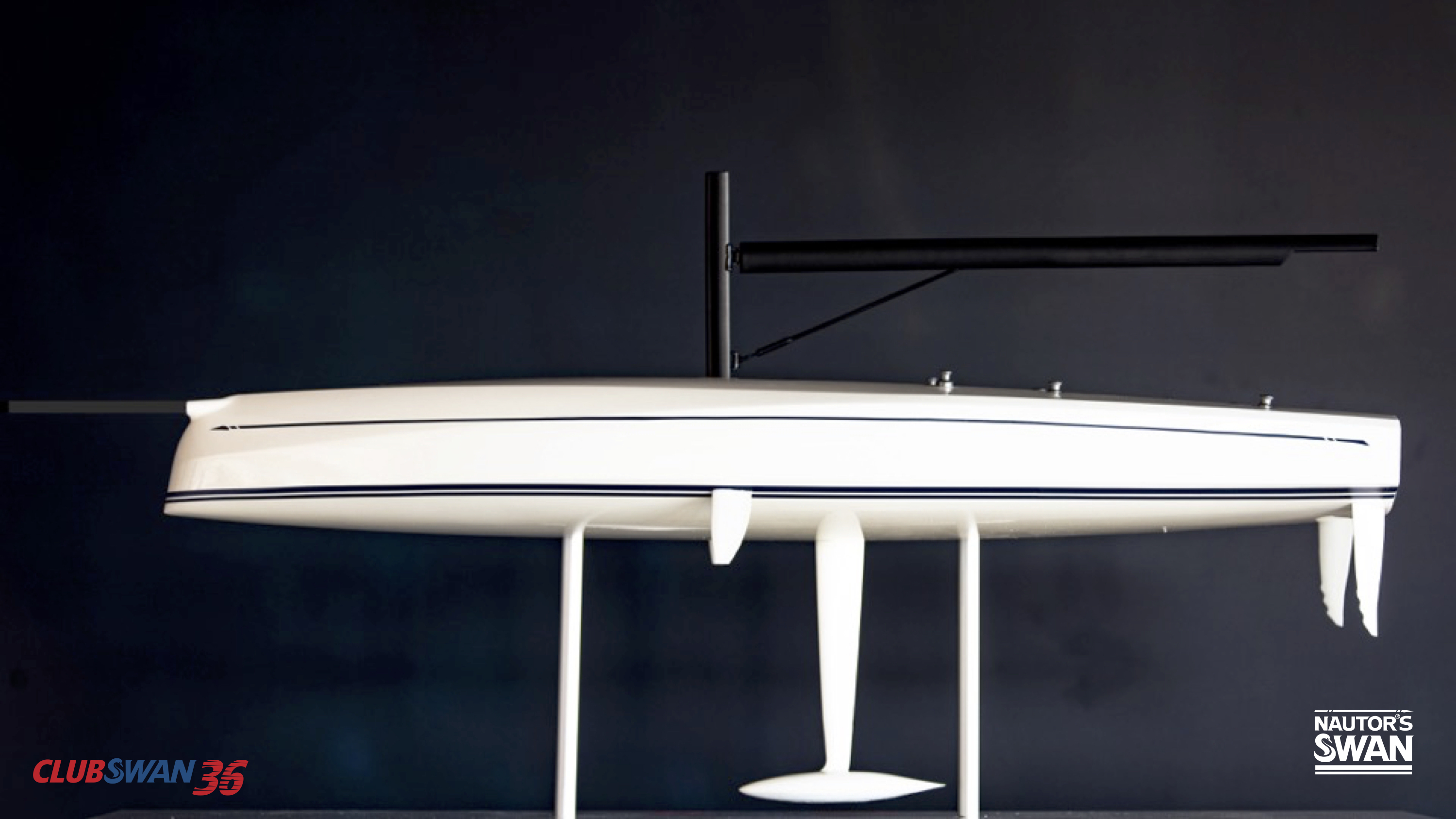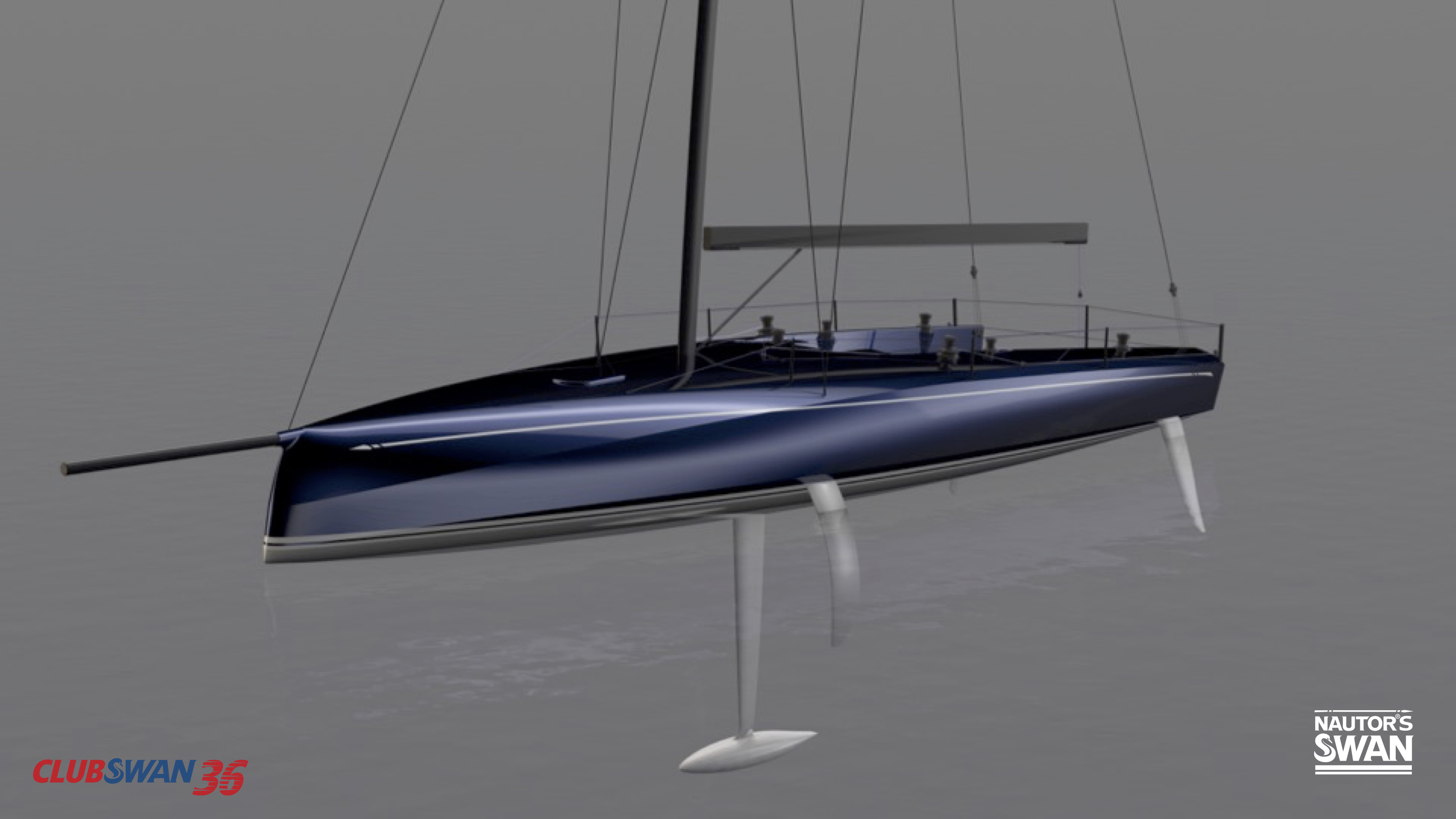Hot hybrid
Nautor’s Swan has revealed the ClubSwan 36, an inspirationally innovative fusion of dinghy and keelboat.
19 June 2018
Advertisement
In order to stand out in a crowded marketplace, one needs to deliver something exceptional. In the boatbuilding arena, new designs arrive all the time. Few come with the pedigree of Nautor’s Swan, the design talent of Juan K, the trusted organisation of ClubSwan and an existing, unrivalled racing programme. The ClubSwan 36 counts on all four.
The concept of the boat is simplicity, speed and exciting racing.
It even has a basic interior. The foil is a sweeping curved board which offers lift and additional stability. Rig is a soft single spreader carbon in the vein of a Soling or even a Star.
The ClubSwan 36 is more than just a new boat. It is a statement. Fusing the best attributes of dinghy and keelboat sailing with the exhilaration of foil assistance makes this yacht the most innovative entry-level one design sports boat of its era.
It is a clear message that Nautor’s Swan is looking to the future as much as its past in the desire to open new owners to its products and the ClubSwan world. It is proof of the burgeoning appeal of the Swan regatta programme and, in particular, Swan One Design racing.
Advertisement
When addressing the project, Enrico Chieffi, Vice President of Nautor’s Swan, past Olympian and former Star World Champion, is quick to emphasise that the ClubSwan 36 holds true to the longstanding philosophy of the established boat-building brand: “We have always been about delivering the very best possible sailing experience to our owners,” he explains.
Cheffi confidently predicts the ClubSwan 36 will set a new benchmark by “combining our considerable skill in building seaworthy yachts with the elegance and design flair of the moment. Incorporating new materials and technology that enhance the sensation of time afloat. Introducing innovations that change the way the industry thinks. The ClubSwan 36 covers all these and will be a fabulous addition to the Nautor’s Swan range and, in particular, the ClubSwan division,” he says.
Leonardo Ferragamo, Chairman of Nautor’s Swan, is another enthusiastic proponent of the project and has been ever since the concept was first put forward: “We are always looking to open the world of Nautor’s Swan and the ClubSwan soul to an ever-larger audience and especially to the next generation of sailors.
52 years after the launch of the first Swan model, Nautor is introducing a fifth one design class: the ClubSwan 36.”
“The first ever Swan was an emblem of innovation and modernity,” continues Ferragamo. “Our goal is to keep going in the direction of travel that started 52 years ago: looking for a very simple way to race with a fast, safe and performing boat, keeping Swan’s DNA: quality, attention to detail and style.”
The ClubSwan 36 offers more than great sailing. It is a direct route into one of the best clubs in the yachting world, immediately opening the door to the ClubSwan family and Swan One Design racing programme. As early as 2019, it will form a part of The Nations Trophy Leagues anticipated for the Mediterranean and the Baltic, plus The Nations Trophy itself scheduled for October in Palma.
Ferragamo reveals there are plans to have a fleet of ClubSwan 36s racing in The Nations Trophy 2019; “we will organize lots of events in the Med and we will create a circuit in the Baltic.”
Looking beneath the gloss, the technical prowess of the ClubSwan 36 is apparent: flush deck, open cockpit and retractable bowsprit; chamfered bow to lower CG and to cut aero drag and weight; the transverse sliding C-foil, offering side force and lift in varying degrees depending on the angle of heel; and, the “soft” carbon rig providing a myriad of tuning opportunities.
The ClubSwan 36 C-foil is symmetrical, residing in an unobtrusive, internal trunk. With the boat weighing 2.5 tonnes, it is going to be very fast downwind. Upwind the foil will efficiently create side-force turning the keel fin into just a bulb holder. And, the drag downwind will be minimal.
The C-foil is deployed using a block-and-tackle system. Downwind it becomes a central component in determining optimal trim.
Generating some side force when the boat is heeled means it is a boat that responds positively to heeling downwind. This has advantages in getting the twin rudders in line with the water flow.
While the foil will cause most heads to turn, the more interesting aspect is probably the rig. The mast has only one set of spreaders to allow more flexibility and a wider range of tuning options. It is deck-stepped and setting the rake will be a critical component of both upwind and downwind sailing.
The position of the mast base is adjustable to change the mast’s behaviour when runners are loaded. The shroud bases are further forward than one might normally expect and the mainsail is a key element in the structure.
All in all, the rig is where the fusion between dinghy and keelboat sailing is clearest. In light winds the sails can be deepened to increase power; in a breeze, the sails can be flattened to depower. It is a mast that encourages experimentation and will appeal to the technically minded.
The ClubSwan 36 class rules are in development, but one principle central to all Swan One Designs has been settled from the outset. This is a strict amateur Owner/Driver class with a maximum of 50% the crew being professionals. The aim being to encourage the virtues of Corinthian sailing.
Hull Zero, due to be launched later this year, will be sailed by the ClubSwan 36 project team as a prototype. All the systems, such as the foil control, spinnaker retrieval and rig tuning will be refined on this test platform before production begins. This step will ensure that owners may expect each new ClubSwan 36 to be perfectly matched from the day they are launched.
The launch of the Hull Zero prototype will also help enable the development of a transformational, innovative auxiliary propulsion system. Nautor’s Swan, Torqeedo (the German manufacturer of electric motor and battery systems) and BMW have partnered to develop a zero-emission e-propulsion system. The approach is to consider the system-efficiency as a whole from the battery to the propeller, where a 5-blade retractable propeller is already on the drawing board.
CLUBSWAN 36 PRELIMINARY STANDARD SPECIFICATIONS
LWL = 11.00m
LOA = 10.50m
Beam Max = 3.60m
Draught = 2.75 m
Displacement measurement = 2,500 kg
Displacement
Sailing = 2,950 kg
Ballast = 1,400 kg
Twin Carbon Rudders
Carbon curved rotating dagger board
CONSTRUCTION
Engineering – ISO 12215-5 CAT B.by Pure Engineering LLC
Naval Architect by Juan Yacht Design
CE Approval
Builder TBS – supervised by Nautor’s Swan
One Design Class Management by Nautor’s Swan
Product Development Specialist – Pietro Mazzanti
Source: Nautor’s Swan
Advertisement
Advertisement
Advertisement
Balmy ride to Bermuda


